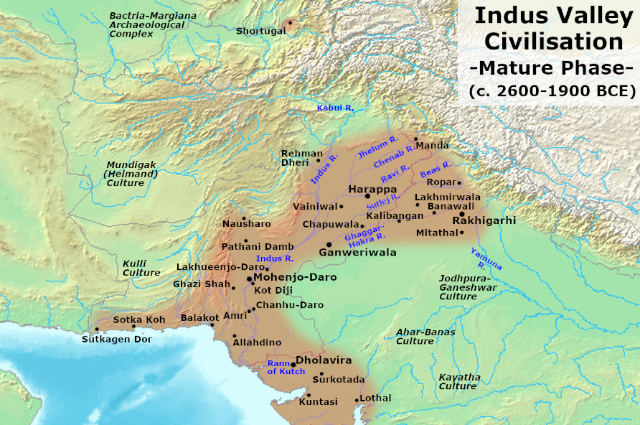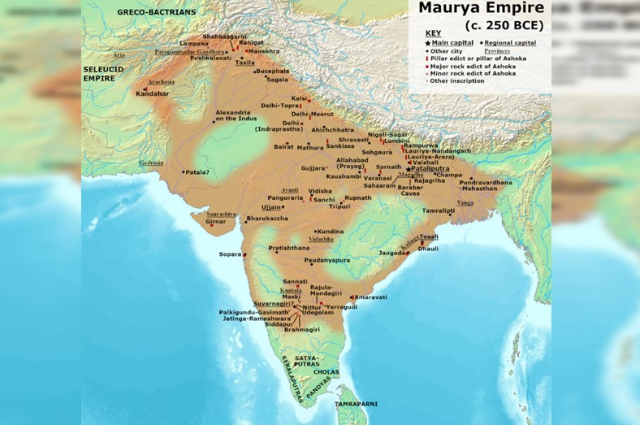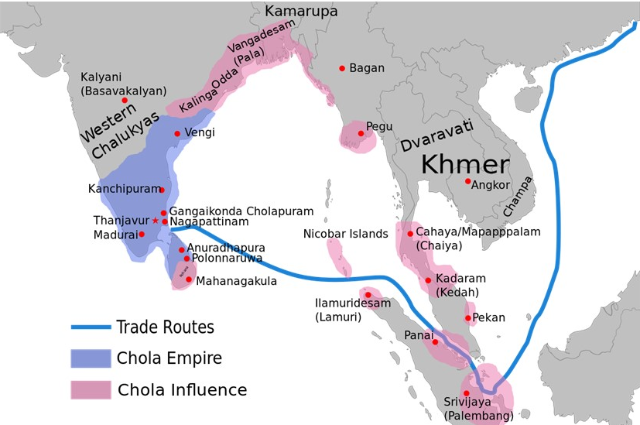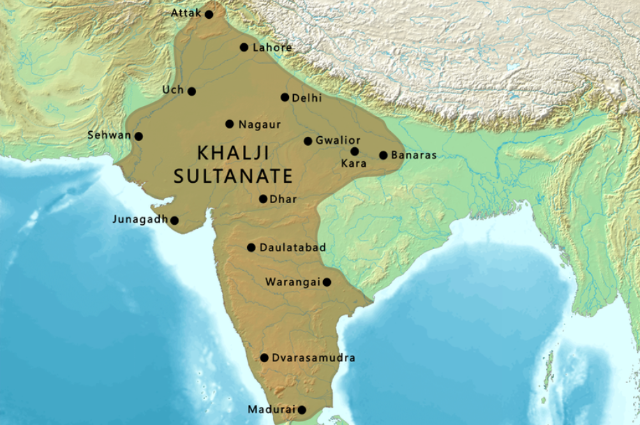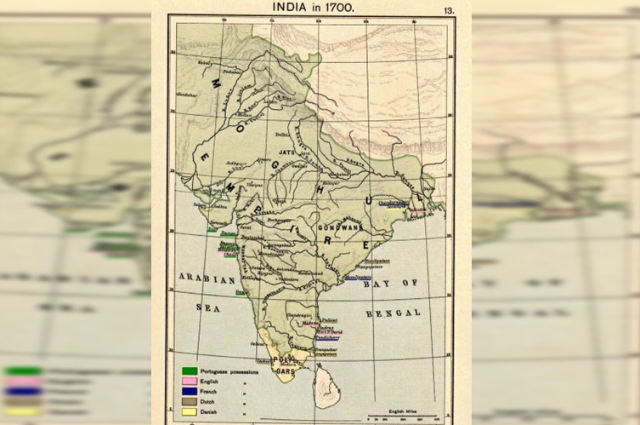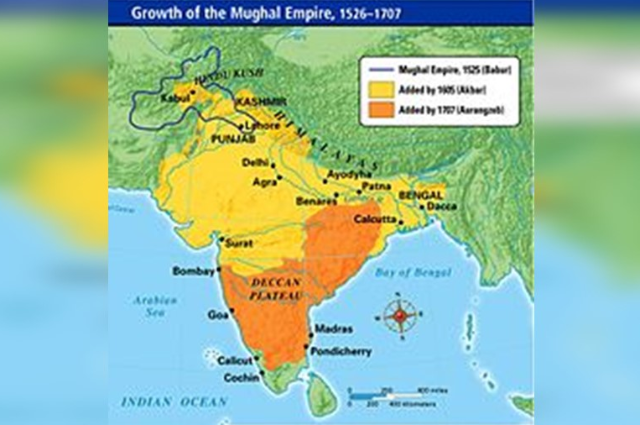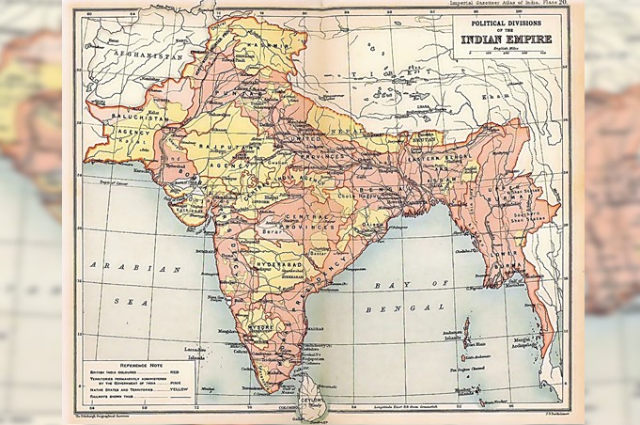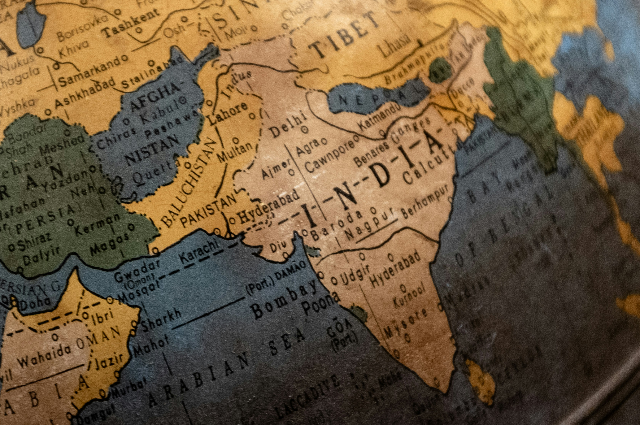
Na Bangladesh na Pakistan, meri asha arman, wo pura pura Hindustan, main usko dhoond raha hoon... (neither Pakistan nor Bangladesh, my hope my wish, that complete India, I am searching for it)”. ~ Mohammad Akmal
India is a giant and a glorious nation. It intends to reach the zenith of progress where it will be guiding the world as Visvaguru or World Leader. There is no denying it and no question can be raised on it. India is the only nation across the world which has the oldest & living religion in the world that is Hinduism. India gave three peace-loving religions to the world Hinduism, Buddhism and Jainism. India draws its history from one of the oldest civilizations of the world which is Indus Valley Civilisation. India is such a nation which has more than one name and those names were kept in different eras such as during the era of Ramayan, and Mahabharata and in Vedas it was called Bharatvarsh or Bharat and Aryavarta. In the medieval period, it was called Hindustan. In the modern era, it was called India. Indian history has been so rich and full of glory that the world can see with eyes of wonder. However, when one has such a glorious, affluent and magnificent history; some people want to distort or loot or take advantage of it, to make their own and that also happened in the case of India. There were so many invasions that took place to establish their supremacy in India during the medieval period. Thereafter, European powers came and made India its colony and started looting its economy. As per the words of the Foreign Minister of India, Dr. S. Jaishankar, based on a rough idea Britishers looted almost 45 trillion dollars of monetary value from India during its rule. However, due to the efforts of great leaders and the general masses of India, we got independence on 15th August 1947, but that independence took a great price from us in the form of partition of Indian territory into two major parts based on religion. The first part was India and the second part was Pakistan. Later on, Bangladesh was liberated from Pakistan. India lost its territory to China in the war of 1961. Earlier, Myanmar was separated from India in 1935 by the Britishers. The point is that India lost its territory over time. And our boundaries kept decreasing constantly. Still today Pakistan has occupied some portion of Kashmir. Despite all these hardships we Indians don't leave the hope of improvement and its example can be seen in the form of a new dream which is going on in the mind of the people of India. The dream is to see India as an Undivided India or Akhand Bharat. This dream, however, is not as new as it seems; this dream had started emerging during the time of 1930s when some intellectuals mentioned it but its necessity was strongly felt after 1947 when the devastative impact was seen of partition, where lakhs of people were killed and a great hatred emerged in the heart of both the nations India and Pakistan.
Having read this term some people must be thinking what is this dream all about? What is the need for it? What is the necessity of it? It is an irrelevant topic we must think about other economy-related topics. We, however, will see how this article will strive to respond to all these questions. Before that, it is necessary to keep a point in mind that before understanding any topic we do not have a rigid perception of it. Be optimistic before any approach.
WHAT IS THE NEED OF SOLIDARITY?
In our childhood, we all have heard the moral story of breaking a single stick and being unable to break a pile of sticks at one time. That moral story reveals the principle of solidarity or unity. The story indicates that loneliness has weakness and unity has great strength which cannot be broken easily but exceptions are only the saints and great souls and not the general masses. In solidarity, if one falls sick, the other one affectionates and cares about the former. If one is in a deplorable condition, another one will come forward and assist the person who is suffering. I am delineating the crux of that short story because I want all of you people to familiarize yourself with the sense of unification, which the dream Reunification of India holds in itself. Unity is responsible for the palpable fraternity and it also upholds the principle of Vasudhav Kumbakam, which shows the culture and outlook of Indians towards the world.
CONCEPT OF REUNIFICATION OF INDIA OR UNDIVIDED INDIA OR UNITED INDIA OR AKHAND BHARAT
The concept of Reunification of India which is more commonly known as Akhand Bharat is associated with assembling the scattered parts of glorious India or greater India; which were split either by invasions or by poor descendants of the emperors and kings or by the deeds of Britishers in pursuance of the policy of divide and rule on the name of smooth administration. How are Britishers involved in it? In 1905, the then viceroy of India, Lord Curzon proclaimed Partition of Bengal in the name of proper and smooth administration, however, the fact of the matter was they wanted to devastate the intellectual power of Bengal and wanted to dig a ditch of religion between Hindu and Muslims.
There are two prominent approaches which are followed to see this dream. The first approach is to see United India or Akhand Bharat as a geographical entity. The second approach is to see United India as a cultural entity.
What does geographical entity mean?
It means to see India united by assimilating various current neighbouring countries of India such as current India, Pok, Pakistan, Aksi Chin, Bangladesh and Myanmar because before partition India was like that. This indicates to make India a greater India by increasing its territorial boundaries. If, however, the point is coming to your mind that it is revisionist policy then I want to kindly inform you that these nations were part of India before the partition of 1947. The discussion is concerning united them back.
In addition to this, some people consider the boundaries of India which comprises current India, Pok, Pakistan, Aksi Chin, Bangladesh, Nepal, Sri Lanka, Myanmar, Afghanistan, Bhutan, Indonesia, Thailand, Cambodia, Malaysia and Indonesia. During the time of ancient India, these countries were part of India during the regime of the Mauryan Empire and the Chola Empire.
What is a cultural entity?
This term is used to denote that the Indian subcontinent and Southeast Asia have thrived in the same culture for a very long time. Therefore, it is the reason why people can see the predominance of Hinduism and Buddhism in these regions. The current ruling political party has mentioned it t it sees the region of South Asia as a single entity due to the impact of a cultural entity.
Lately, in the previous year when the new Parliament building was inaugurated mural of greater India was also there. That shows the greater boundaries of India which comprises of Afghanistan to Assam and from Kashmir to the southern parts of India.
On May 28, 2023, Parliamentary Affairs Minister Pralhad Joshi tweeted, “The concept of Akhand Bharat comes from ancient Indian culture. The new Parliament building depicts various facets of Indian culture, representing every region and all its facets.”
HISTORICAL LEGACY BEHIND IMAGINING THIS DREAM OF REUNIFICATION OF INDIA?
Whatever we have seen in our surroundings is the result of various previous consequences. This line matches with the territorial boundaries of India as well. India had greater boundaries but due to the poor management and partition of India, we lost those boundaries. Despite all these issues, however, India is heading from a developing nation to a developed nation. As the time passes, India is progressing by leaps and bounds. As I have mentioned above, the people are dreaming and willing to see India united again. Let's take a look at the following points owing to which people of India have started considering a dream called Reunification of India or Undivided India or Akhand Bharat:
1. Indus Valley Civilisation:
The Indus Valley Civilisation also known as the Bronze Age civilisation in the northwestern regions of South Asia, lasted from 3300 BCE to 1300 BCE, and in its mature form 2600 BCE to 1900 BCE. Together with ancient Egypt and Mesopotamia, it was one of three early civilisations of the Near East and South Asia, and of the three, the most widespread, its sites spanning an area from much of modern-day Pakistan, to some parts of northwestern India and northeast Afghanistan. India started its history from this very civilization because, before partition, Pakistan was an integral part of India. Before the assault of Ahmed Shah Abdali on the Mughul Empire Afghanistan was part of India. After that, however, afghans started ruling in that region.
2. In Mahabharata:
Mahabharata is the world's biggest epic which has ever been written in any language. Mahabharata is one of the most renowned sources of literature about the era of Mahabharata. In this very epic, there are numerous characters and each character has great to say. Amongst all those characters, there is a character called 'Gandhari', who is the wife of blind king 'Dhrithrashta'. Before marriage, Gandhari was the princess of Gandhar. Gandhar is the same place whose name got changed slightly and is now called Kandhar, that now located in Afghanistan. And then those regions also used to come under Bharatvarsh.
3. Mahajanapadas:
As per Angutara Nikaya, a Buddhist scripture reveals about 16 great kingdoms or Mahajanapadas at the beginning of the 6th century BCE in India. They emerged during the Vedic Age. This period is also deemed as the period of second urbanisation, the first being the Harappan civilisation. Amongst the 16 Mahajanapadas, there were two which were Kamboja and Gandhara, covering the region of the western part of Pakistan and the southern part of Afghanistan.
4. Mauryan Empire:
Chandragupta Maurya (350–295 BCE) was the founder of the Maurya Empire, a geographically-extensive empire based in Magadha. He reigned from 320 BCE to 298 BCE. It can be seen in the map of India that his reign starts ranging from some parts of Iran to the northeastern part of India and from Kashmir to the Chhota Nagpur plateau.
Moreover, during the reign of his grandson, Ashoka the Great the boundaries of India extends exceptionally. Ashoka the Great was the third Mauryan Emperor of Magadha in the Indian subcontinent during c. 268 to 232 BCE. His empire covered the largest part of the Indian subcontinent, ranging from Afghanistan to Bangladesh in the east and from Kashmir to Brahmagiri in the south.
5. Chola Empire:
The Chola dynasty was a Tamil dynasty originating from southern India. At its height, it ruled over the Chola Empire, an expansive maritime empire. The Cholas (8th-12th century AD) is remembered as one of the longest-ruling dynasties in the southern regions of India. The empire of the Chola dynasty stretches in the southern part of India, Sri Lanka, the Lower part of Myanmar, Singapore, Malaysia, and Indonesia.
6. Khilji's period:
The Khalji or Khilji dynasty was the second dynasty which ruled the Delhi sultanate, covering large parts of the Indian subcontinent for nearly three decades between 1290 and 1320. The given can let you imagine how big it was. In Alauddin Khilji's period, the expansion was at its peak. It covered the regions of Pakistan and Afghanistan.
7. Akbar's period:
Akbar was the greatest Mughul and he was considered one of the greatest rulers of his time. He ruled from 1556 to 1605. The given map of India can reveal the expansion of the boundaries of India at that time. In his regime, Pakistan and Afghanistan both were part of India. As far as Bangladesh, it was always part of India till 1947.
8. Aurangzeb's period:
Aurangzeb was the last capable ruler of the Mughal empire. He was considered a great champion of the battlefield. He fought various wars are stood victorious in many of them. He ruled from 1658 to 1707. The given map of India can reveal the expansion of the boundaries of India at that time. In his regime, Pakistan and Afghanistan both were part of India. Under Aurangzeb, the expansion of the Mughul empire was at its peak.
9. British's period:
Britishers stepped into India in the form of a trading company, which got permission from the Crown of England on 31 December 1699. Gradually, they started intervening in Indian politics and gained power. They fought wars with alien and domestic powers to settle themselves here as well. They also tried to gain back the boundaries which India had lost during the medieval period due to foreign invasions. In the middle of the 19th century, they annexed Myanmar, Sindh too. Later on, the power went into the hands of the crown from the company. When, however, the Indian Nationalist Movement started against the suppressive regime of Britishers they started following the policy of divide and rule. They segregated Myanmar on 1st April 1937. They are considered liable for the devastating partition of India along with the Muslim League, which created three nations from one nation if we include Bangladesh as well. Thus, these things pinch in the minds of the people that were divided but we are silent on it.
10. Voice in Independence Movement:
- During the Indian independence movement, Kanaiyalal Maneklal Munshi advocated for Akhand Hindustan, a proposition that Mahatma Gandhi agreed with, believing that as Britain wanted to retain their empire by pursuing a policy of divide and rule, Hindu–Muslim unity could not be achieved as long as the British were there.
- Mazhar Ali Khan wrote that "the Khan brothers determined to fight for Akhand Hindustan, and challenged the League to fight the issue out before the electorate of the Province." On 7–8 October 1944, in Delhi, Radha Kumud Mukherjee presided over the Akhand Hindustan Leaders' Conference.
- The Indian Nationalist and Hindu Mahasabha leader Vinayak Damodar Savarkar at the Hindu Mahasabha's 19th Annual Session in Ahmedabad in 1937 propounded the notion of an Akhand Bharat that "must remain one and indivisible" "from Kashmir to Rameswaram, from Sindh to Assam." He further said that "all citizens who owe undivided loyalty and allegiance to the Indian nation and the Indian state shall be treated with perfect equality and shall share duties and obligations equally in common, irrespective of caste, creed or religion, and the representation also shall either be based on one man one vote or in proportion to the population in case of separate electorates and public services shall go by merit alone."
ADVANTAGES OF REUNIFICATION OF INDIA
Before indulging thoroughly in any work it is necessary to understand the cost-benefit analysis. It states how much profit or benefit the doer is getting by putting the hard work into that. To comprehend that it is quite essential to know the advantages or the possible positive impact of that. If we want to understand the wide impact of the reunification of India or Akhand Bharat, we can categorise them in different subheadings in the following manner:
1. Geographical Consequences:
If India unites, the first thing that will change at the moment is the boundary. Currently, as per the geographical area India is the 7th largest country in the world. Having added these, South Asian nations India will have surpassed the nations which are ahead of it such as Australia and Brazil. How much bigger India will that depends on the subject of how many nations are uniting with India.
2. Poltical Consequences:
- As soon as the reunification of India takes place the participation of Muslims and Buddhists will increase in politics.
- The promotion of democratic and secular approaches will increase. And that will be the base of the politics of the United India or Akhand Bharat.
- When everything is united at the Central level of the United Nations or Akand Bharat. The new name of India may be called Bharatvarsh. This was the ancient name of India which is mentioned in the Vedas and Upanishads.
- After reunification, India will again get the title of Visvaguru or World Leader. With its ancient glory. As in ancient India, these nations were part of Bharatvarsh( Ancient India) and matter of hatred was there amongst the masses.
3. Social Consequences:
- The demographic of the nation will change, i.e. the total percentage of the Hindu population will go down and the percentage of others will increase such as Muslims and Buddhists.
- Fraternity amongst the people will increase the number of people here.
- Having a united government will focus on education instead of competing and quarrelling with other former nations.
- In undivided India, an amalgamation of culture may be seen because people will get the opportunity to move to and fro without any hindrance and passport and visa-like elements. India already is considered the patron of diversity, after reunification, India will become the centre of all the living religions and sects of the world.
- Peace and Harmony will be present because when all these nations understand the importance of unity and the leading ability of India then the people will cooperate in their work.
- In Undivided India or Akhand Bharat, the focus and investment of energy of the government and people will be on removing the social evils and not on spreading hatred about each other's religions.
4. Economic Consequences:
- If India gets united, a drastic impact on the economy will be seen undoubtedly, the impact will be negative and positive because nowadays each nation has borne so much loan on its shoulders. If those nations come and meet with India then India will have to bear the burden of all those loans. However, that could be faced if cooperation and proper strategy are followed.
- If India becomes united, the proper utilization of natural resources will be made. And with the aid of skilled and educated people new start-ups will keep on launching to fulfil the demand of the huge population. This will boost the economic growth of the Undivided India or Akhand Bharat.
- Infrastructural development in all across Undivided India or Akhand Bharat will strengthen the domestic trade and substantial GDP will be registered.
- Nowadays with each passing day the condition is becoming worse and worse. Instead of separate policies a collective effort will be better and nurturing.
- The wide geographical area of Undivided India will allow to use of wide-speed coastal lines as well and will increase the coastal trade of India.
- There are issues like food security and water scarcity, on such serious issues if a massive and localized strategy is made as per the geographical and work is done under the supervision of a one centralised government then the desired changes may be seen.
5. Security Consequences:
- On account of the Reunification of India, a large impact will be seen in the case of armed forces as hostility issues will end up along with terrorism to a great extent.
- Everyone is aware of the hostility between Pakistan and China. If Pakistan merges with India again then at least India will have one less. Further, by using Pakistan, China will not be able to assault India.
- Security forces and armed forces of other nations will merge with India. Thereafter, India will have the biggest armed forces in the world. Probably the biggest in all the three formats of the forces.
- The number of people are dying on the borders, soldiers are martyring. Human loss, property loss, economic loss and sense of being killed in border areas will end.
- Currently, India is the biggest economic and military power in South Asia and 2nd biggest armed force in Asia after China. If, however, these nations merge with India, India will be able to compete or battle against the imperialistic policy of China.
- Drug, smuggling and human trafficking are major issues in South Asian countries, however, if reunification takes place then with the collaborative effort these illegal activities will be withheld.
6. Cultural Consequences:
A massive country like India which is already enriched with various forms of art from different corners of the country itself, can give appropriate space to other forms of art as well. India produces a maximum number of films every year in the world. India has two main forms of classical music: Hindustani Music and Carnatic Music. India has various forms of classical dances from different corners of the country. India has 22 official languages. A nation which is enriched with all these elements is not explicit that it tends to accept all the different forms of colours of religion, art, dance and language forms.
7. Foreign Consequences:
If the reunification of India or Akhand Bharat happens then the geopolitics of the world will change thoroughly. Then, India will be the most significant nation in the world. Being such an enormous and powerful nation and representing such a huge population of the planet, it will get a permanent seat in the United Nations Security Council. Being such a big nation and bearing such a huge population, will be the epicenter of foreign investment. The economy will shoot up like anything in such a situation.
CURRENT SITUATION OF INDIAN SUBCONTINENT
The current situation of the South Asian countries is that they have constituted two major organizations for better cooperation in economic and strategic activities. Here, a small form of cooperation can be seen in the form of SAARC and BIMSTEC. Let's first understand in brief about these organisations and then go into the discussion of the further possibility of reunification of India.
SAARC
The South Asian Association for Regional Cooperation (SAARC) is a regional intergovernmental organization and geopolitical union of states in South Asia. Its member nations are Afghanistan, Bangladesh, Bhutan, India, Maldives, Nepal, Pakistan, and Sri Lanka. SAARC consists of 3% of the world's land area, 21% of the world's population and 5.21% (US$4.47 trillion) of the global economy, as of 2021.
BIMSTEC
The Bay of Bengal Initiative for Multi-Sectoral Technical and Economic Cooperation (BIMSTEC) is an international organisation of seven South Asian and Southeast Asian nations, housing 1.73 billion people and having a combined gross domestic product of US$5.2 trillion (2023). The BIMSTEC member states –Bangladesh, Bhutan, India, Myanmar, Sri Lanka and Thailand- are among the countries dependent on the Bay of Bengal.
However, due to the geopolitical conflict between India and Pakistan and the situation in Afghanistan, the organization has been suspended for a long time, and India currently cooperates with its eastern neighbours through BIMSTEC.
As we can the if we add the population, and economy of these countries then how large it can become? Just think about this point if these nations come across and determine then they can become such a great nation which can work for the well-being of the people of Greater India after reunification. How fantastic it would be! Furthermore, as we know that tussle or proxy war is going on between India and Pakistan on account of that SAARC has become worthless. If, however, these nations reunite and become a single greater nation, the emphasis will be more on the problems of the people instead of scuffling and competing with each other.
HOW MANY ARE THERE POSSIBLE WAYS TO UNITE INDIA AGAIN?
We have seen the possible advantages of reunification of India. Now, you must be thinking that if it becomes substantial, the great impact can be seen in the region as well as in the world's politics; but are there any possible ways to unite India again or see the Reunification of India or Akhand Bharat? Here, as per the current circumstances, there are two ways through which this dream can be materialized and those are given below in the following manner:
1. Destructive Way:
The first way is the onslaught on neighbouring nations like Pakistan, Bangladesh, and Myanmar. This way, however, is not only absurd, illogical, inhumane, unethical, and relentless but also against the historical & cultural values and foreign policy of India. India doesn't want to go with this approach, India should never go behind this approach. This approach was never adopted by India in any part of its history and this will devastate the picture of India in the international arena. This will deprive the breathing of numerous people from this world.
2. Constructive Way:
In this way, the dream of Reunification of India or Akhand Bharat can be accomplished without shedding a single drop of blood. And everyone will be happy and enjoying the life. This very approach can be further subdivided into two ways and they are given below in the following manner:
Actual-Reunification:
In this way, the nations will come by their desire to assimilate in the territory of India, it will be the best and most desirous way of reunification because this reunification will destroy the hatred and restore the condition as they were existing way back. How can it happen? It can happen if India is an economic, spiritual, social, democratic, and environmental superpower which can guide the world with no suppressive power and intention
and other nations are in search of those elements then India can allow them to merge with itself to grow together. e.g. If Pakistan, Myanmar and Sri Lanka assimilate with India.
Pseudo-Reunification:
In this way, the nations will come together and form an organisation like the European Union. In which the nations will work for a common goal that will benefit all the nations. In this case, a Central Parliament may be formed in which the members of all the nations will participate and will make collective decisions in favour of everyone. How can it happen? Against the revisionist and imperialistic policy of China, India and other South Asian countries can stand by forming the Asian Union. e.g. An Asian Union will be formed on the model of the European Union.
PRACTICALITY OF REUNIFICATION OF INDIA
Whatever solutions are suggested by the scholars are to be studied but the most important thing is about its implementation or feasibility on the ground. The biggest question here that the reunification of India is a practical dream or not.
Ally feels none have seen the future and in this sensitive world, anything can happen at any point in time. As the climatic situations are becoming worse, as the different countries of the world are waging war, as the proxy wars are going on; anything can happen. People only can assume the situations, none can exactly predict.
If, however, we go with the present situation then it may or may not happen that nations of the Indian subcontinent will merge with India, particularly the regions like POK, Sindh and the Balochistan region of Pakistan.
In Myanmar, the military had couped the government and taken power into its hands, then people may approach the Indian government to look after them.
In Sri Lanka, the economic situation is poor thus the people may raise their voices to assimilate themselves with India. India had a relationship with Sri Lanka from the very beginning.
In Nepal, people are struggling between a monarchy and a democratic system. Thus, if people approach India then they can unite with India.
In Tibet, if the economic and military power of India increases exponentially then the oppressed people of Tibet can be liberated from China, which was annexed by China in the 1950s.
The concept of Reunification of India in this way seems a utopia. If it happens, nothing can be better than this. To a great extent, it seems impractical, however, again I want to mention that anything may happen at any point in time. It has happened in past. We have two major precedents from different corners of the world. The first precedent is about the Reunification of Germany and the second presence is from the reunification of Vietnam. If two Germanies can come and reunite if two Vietnam can do the same, why not India?
There is another possible situation that is like the European Union if all nations get convinced then they can collectively form the Asian Union to grow together against the revisionist and imperialistic policy of China. That will also be a kind of reunification. This is a more practical and possible situation because China is a communist nation and it wants to make another nation dependent on it. China wants to stand and rule in Southeast Asia and the Pacific region. China wants to make every nation economically colonized. Here, India can act as a democratic alternative before the South Asian countries and they can form a Union like the European Union.
MEASURES TO MATERIALISE THE DREAM OF REUNIFICATION OF INDIA
If India wants to materialize this dream, it needs to work on so many areas to make the situation in such a manner that situation turns in such a manner that it starts happening. We, however, need to understand that it is not easy and it cannot happen in just one day. There are certain steps which need to be taken to make the condition more conducive and those steps are given below:
- First of all, India needs to make itself capable by dissolving all the internal issues related to Naxalism, Hindu-Muslim conflict, Communal and Caste-related issues, poverty etc.
- India needs to end communal violence, religious nationalism, and oppression against minorities.
- India needs to convince the nations to amalgamate with India by telling them the great advantages of it.
- India needs to promote cooperation amongst all the nations.
- India needs to tell about the great culture of India and tell them India is the only nation in the world where all the religions and their sects are found and they are secure in India. And there should be the acceptability of others' religion, race, culture, language as well.
- For this, each nation needs to be a democratic and secular nation.
- The psychology of the people needs to change bring flexibility and keep humanity on top.
- I feel the biggest element which is required in the case of India is the economic and spiritual upliftment of the people of India.
CONCLUSION
After Akhand Bharat, India will become Bharatvarsh from Bharat. With regard to the Reunification of India, we have seen that there are so many advantages which the people of this region called the Indian Subcontinent can imbibe. It is a pious hope and must be appreciated in its true spirit. Unification always has a plus point or edge over segregation, whether it is a union of a family or a nation. Policies like divide and rule and Balkanisation are something which divide the people amongst themselves, which creates ditch and hatred amongst people. The impact of division can be seen in India in the form of two nations- India and Pakistan. The impact of Balkanisation can be seen in the form of the fragmentation of some nations into various parts based on an area, country, or region into multiple smaller and hostile units. It is usually caused by differences in ethnicity, culture, religion, and some other factors such as past grievances. It is a European approach but the Indian approach believes in the Principle of Unity in Diversity and Unification. Thus, as early as the Reunification of India or Undivided India or Akhand Bharat is possible to make it happen in either of the positive and constructive ways; however, India must have been an economic superpower before China.
. . .
REFERENCES:

